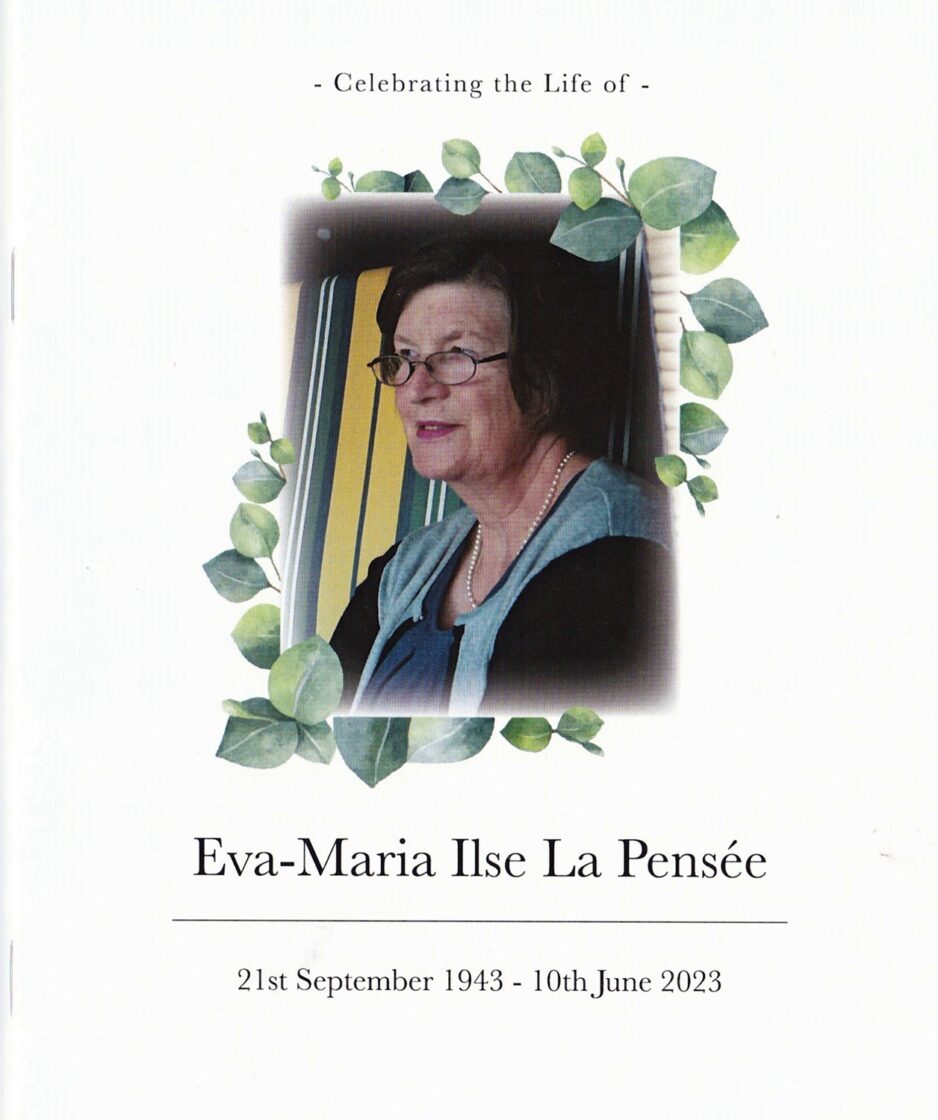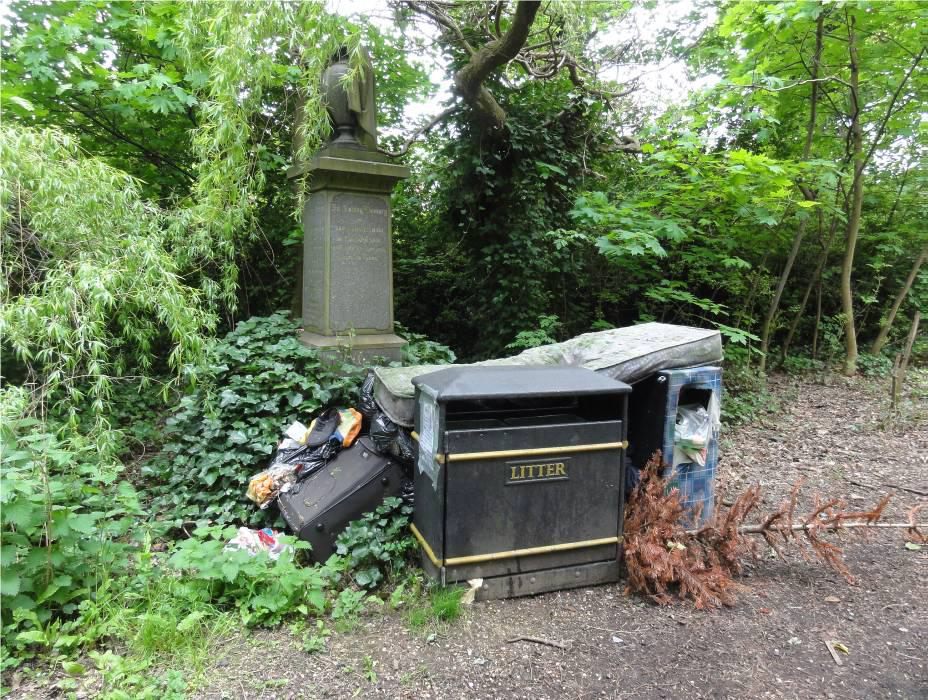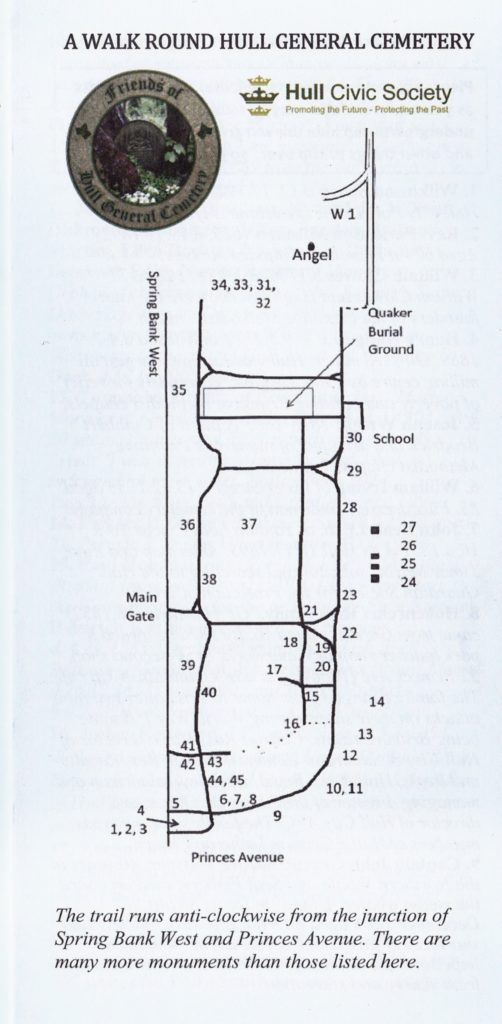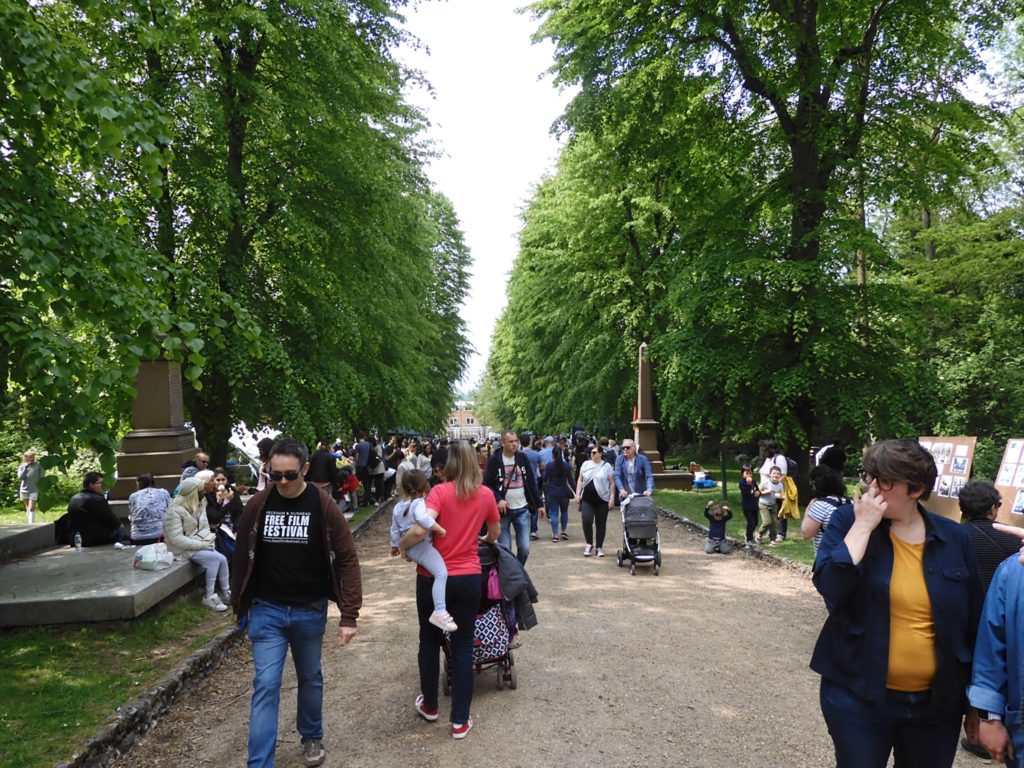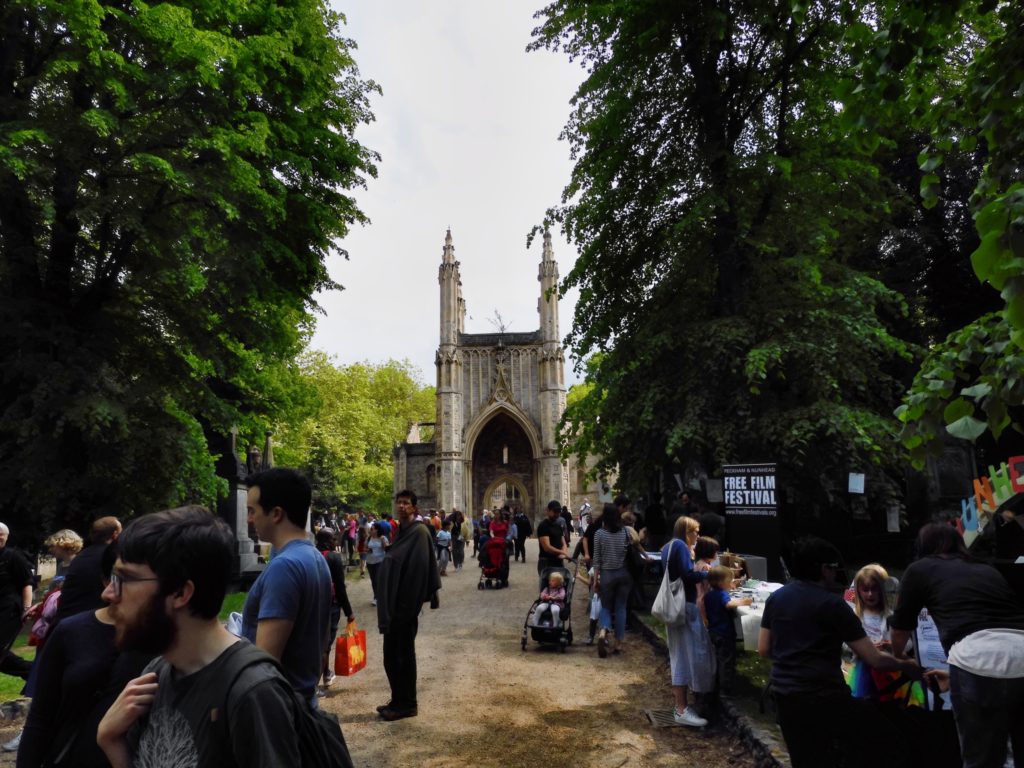The death of Eva La Pensee in June was a shock although in our hearts we all knew it was coming. Eva had been ill for some time and this had restricted her physical involvement greatly. However, she still played an active role in the policy and clerical work that such a project throws up. Over a few short months even this work became too much for her. Eva died on June 10th.
Secretary
Eva was the original secretary and minute secretary of the FOHGC. She was also one of the founder members of that group attending its inaugural meeting in 2016. She took on board the idea that the cemetery was valuable to the citizens of Hull even if they themselves were not aware of it. As such she launched herself into the above roles with her usual skills and enthusiasm. Her forte in the organisation was the ability to be both analytical and work to a goal. She provided the necessary rigour and discipline that was lacking in some of the original members who were moved more by ‘magical thinking’ than realism. She could see that this project would need more than ‘wishing on a star’ to make it happen.
Skill set
Eva knew that a fanciful approach, unless tied in with factual evidence, was doomed. The Friends needed to convince the people who needed to be convinced to support the fledgling group. She could do this, marshalling an argument so perfectly, that to refuse her analysis of a situation would have been seen to be just being stupid on the listener’s part. I sometimes just had to sit there and admire her in action.
She also had a good grounding from her work with various local authorities that enabled her to negotiate the very first grant from Hull City Council. This grant allowed the Hull Civic Society to open a bank account for the Friends, which at that time was a sub-committee of that society. From this small acorn the Friends grew, FOHGC? Who the hell do they think they are?
What was that all about?
At my first meeting of the Friends, Eva was absent and on holiday. I must admit that I was less than impressed with the organization at that time. It seemed to be dithery and lacking focus. There was no shortage of ideas which was a good thing. Sadly all were doomed. They were either so nebulous that they could never happen. Or, on the other hand, some ideas would have been so negligible in their effect they would not have been worth doing. Adopt a grave, anyone?
So what was the point in talking about them never mind trying to put them into practice. I left the meeting frustrated, and thinking I’d give them another go to prove themselves to me, as I was interested in saving the cemetery. However, as usual, I was busy with other things so I wasn’t going to waste my time.
Eva as a leader
I am so glad I did go back.
At the next meeting Eva was present. You could see immediately how she co-ordinated the meeting. Shepherding the chair, allowing discussions to reach a logical end point and then summarising the debate. And then writing it all up as the minutes and circulating them. This was a whole different ballgame. Count me in I thought.
From my perspective the Friends could not have survived a year without Eva’s intelligence, drive and ability to organise. She was the engine behind the group. She put the fuel in the tank. Without her there at the beginning, the group would never have left the sterile debate of the boardroom where big dreams were endlessly debated yet little groundwork ever happened.
Mutual respect
As time went on we became friends. I’d like to think that there was a mutual respect for each other. We had disagreements of course but never on a personal level. The disagreements happened when our visions for the cemetery did not coincide. Sometimes she was right and sometimes, on far fewer occasions I have to admit, I was. The point was that both of us wanted the best for cemetery and it was just the ‘how’ rather than the ‘why’ which set us apart for a few moments. She was also someone who could recognise when a colleague was overextended.
My forgetfulness and how Eva saved me
One instance of this happening was when Eva had arranged a visit to the cemetery of a group of Hull University students. Eva asked me if I could guide them on the day and I agreed. I knew I had other things on my plate at the time. I probably thought my plans were much more important so the event was filed away in my mind but not in my diary.
The result was as you would expect. I forgot all about it and only later that day, hours after I should have been there, did I remember. I rang Eva to apologise. She said that I shouldn’t worry as she had realised I was up to my neck with things and she had gone along, ‘just in case’. At the next Friends meeting I explained my failure to the rest of the group and how Eva had rescued the group’s good name. Eva sat there quietly while I finished and then said she had planned to attend anyway to help me.
Afterwards
After the meeting she quietly said to me that I had no need to let the others know as she knew I was doing lots of work that many of the other members were not. I said I was raised to ‘own up’ if I had done wrong. She just looked at me and silently shook her head. I occasionally brought up this episode at future meetings as a kind of running joke between Eva and myself. To see Eva smile and tell me, in a mockingly severe tone, to ‘let it go, Peter’ and ‘that she hoped I would try harder in future,’ were some moments I truly treasure of this remarkable lady.
Books
Let’s never forget that it was Eva who prompted Bill and myself to write the books on and for the cemetery. She invited us to her house where Clive, her husband, ran through how one could publish books on Amazon without any start up costs. Although neither Bill nor myself were sure about whether we were ‘author’ material we set to. The result as I detailed in an email to the FOHGC last December was that we had sold 774 books and made, for the FOHGC, over £2000.
None of this would have happened without the gentle nudging of Eva.
Her past
I remember another occasion when Barbara and myself arranged to attend a walk given by Paul Schofield around the historic sites of Primitive Methodism in Hull one evening. Eva was also going and we met up. Later, after the walk, and as with all Paul’s walks it ended with a visit to a pub, we sat and talked. She told us of her childhood in war torn Germany and her experiences which had obviously shaped her views on many things.
I thought at the time how she was, to coin a phrase, ‘ so well-balanced’ after that trauma. She could have given lessons in humanity and co-existence to some of our present politicians who still feel the need to ‘re-fight’ the Second World War to appeal to the baser instincts of society. Here was a woman who’d seen those ‘baser instincts’ as a child and had no desire to have them inflicted upon others today.
Our loss
The Friends has lost one of its guiding lights. I have lost a good, true friend as I know all the others in the Friends group have too.
A greater loss than ours
Our thoughts go out to her husband Clive, her daughters Annemarie and Louise and their partners. Of course one must not forget Eva’s grandchildren. They were a joy to her later years.
Our loss is minimal to all of theirs and cannot compare at all. As Clive said at the funeral, Eva’s last words to him were, ‘We go in different directions now’. I can only guess that without that guiding light of Eva showing the right direction all pathways will remain dark for a while.
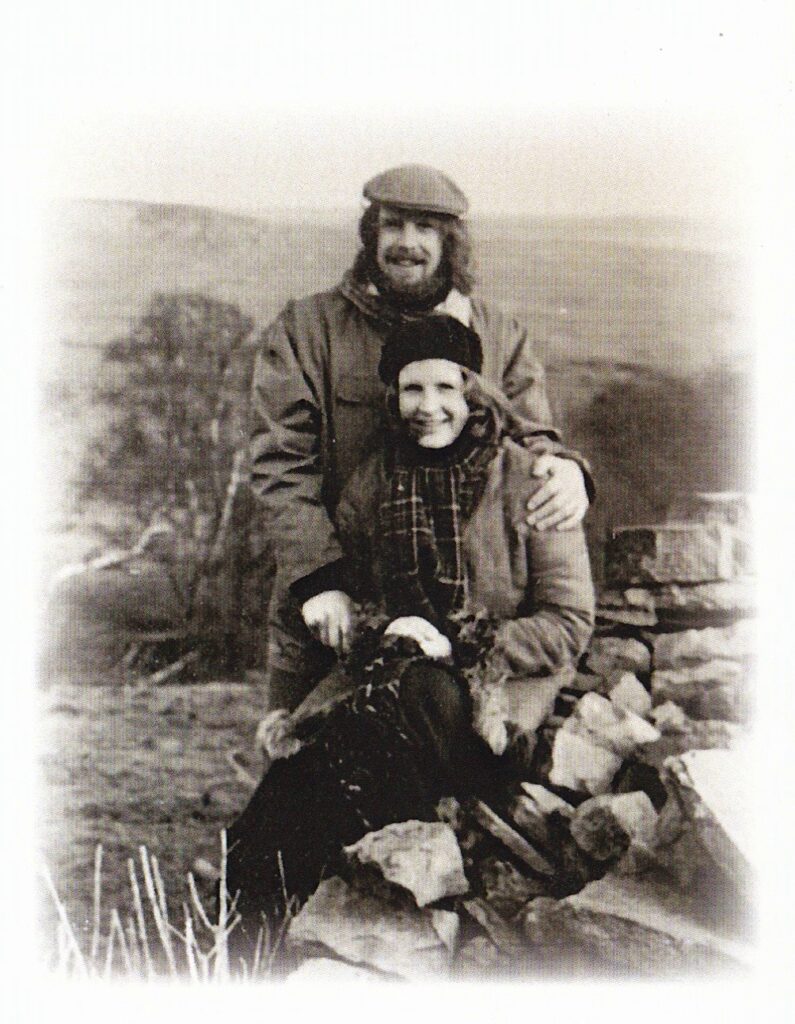

Pete Lowden is a member of the Friends of Hull General Cemetery committee which is committed to reclaiming the cemetery and returning it back to a community resource.

